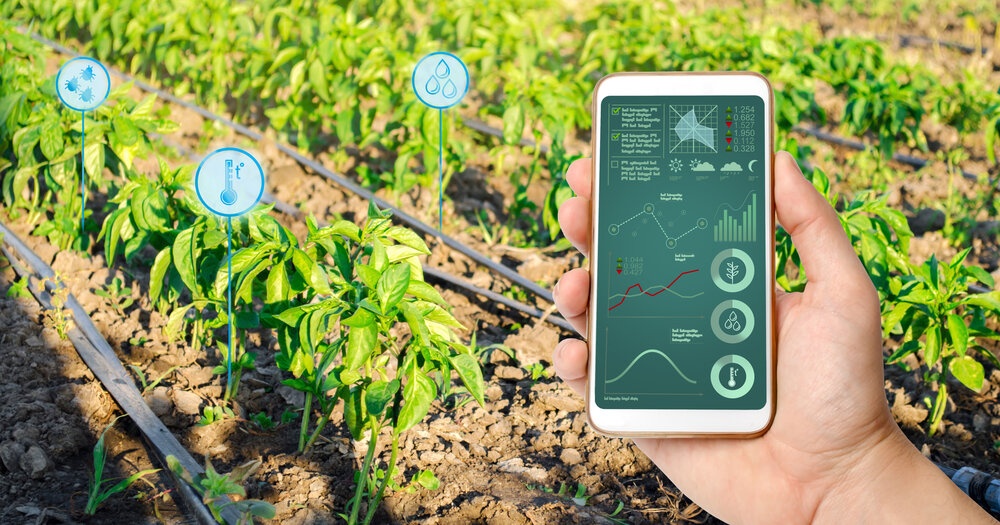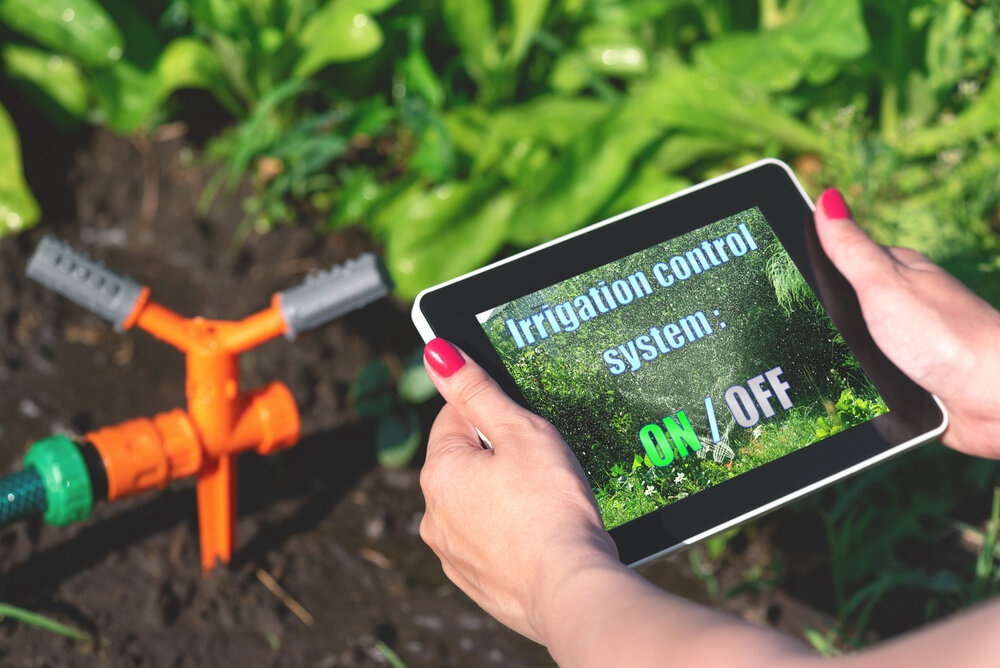You will be familiar with smartphones and probably smart TVs. But you may not be familiar with smart irrigation.
Smart irrigation might not affect you right now, but it is working on your behalf and is being used to improve our lives and to protect and conserve our environment
Why is Smart Irrigation
Smart irrigation provides water based on the specific needs of the soil and landscape. They detect weather, water levels and soil conditions and respond accordingly.
What Makes Smart Irrigation So Special?
Water is an invaluable resource. Life would not exist without it. Anything that impacts the availability and the long-term future of water supplies positively deserves recognition, and smart irrigation is one of those things.
The exciting thing about smart irrigation is its ability to monitor local weather and soil moisture levels and use the information to automatically adjust a watering schedule to provide exactly the right amount of irrigation that plants or crops require for healthy growth.
Where smart irrigation is employed, it means no more over or underwatering. It promotes the use of water in the most efficient, environmentally friendly way.
The Introduction of Drip Irrigation
It doesn't matter what your motivation is - it could be reducing the size of your water bills or water conservation from an eco-friendly viewpoint - installing a smart irrigation controller could be the answer.
Smart irrigation technology exists in various forms - as complete controllers, or sensors that can be incorporated into systems with existing irrigation timers, thus creating smart controllers.
Watering home gardens and lawns is not only a chore; it is often a wasteful use of water, particularly when carried out using a handheld hose. In recent decades, modern irrigation systems have been designed to make this chore easier.
Sprinkler systems cut water wastage considerably, but it didn't stop there. Drip irrigation then came on the scene, and this too had a significant impact on water wastage. Instead of watering parts of gardens that didn't need it, the careful placement of emitters ensures that water is delivered closer to the roots of plants.
As well as being a much more economical use of water, it also cuts down on water loss by reducing evaporation loss, especially when drip irrigation (also known as micro or trickle irrigation) is installed sub-surface - i.e. just below the surface of the soil.
Drip Irrigation Goes Smart
In the past few years, drip irrigation systems have become properly smart. They now incorporate controllers that can access the IoT (Internet of Things) through cloud computing via Wi-Fi. These systems can be managed remotely through websites or smartphone apps.
Cloud-based technologies log data through flow sensors, and link to online weather feeds.
They can make a significant difference to the home gardener or landscaper, not only cutting costs but making a substantial contribution to environmental preservation.
But it's not only in the home where these gains can be taken advantage of.
We Have Been Warned
Here in the UK, the Environment Agency recently labelled irrigation prospects as being moderate to poor, particularly in the East of England. The worst affected counties were Cambridge, Essex, Norfolk, and Suffolk.
Since the warning, we have had substantial rainfall, replenishing some aquifers, but climate change concerns can quickly alter the situation. Other countries are not so lucky, and what most of them have in common is their reliance upon chalk aquafers.
An article published on the Bloomberg.com website explains the dangers, not just to aquafers in the UK but worldwide.
Much of the water used for irrigating crops is drawn from wells. They supply half of global irrigation needs, plus drinking water for billions of people. Unfortunately, the aquafers that supply this water have been over-drained due to the intensity of demand and poor governmental management.
Smart Irrigation is Finally Being Taken Seriously
In the USA, they celebrate "Irrigation Month." It takes place every July and is an initiative brought into play by the Irrigation Association. Its purpose is to increase public awareness. It is done through a series of campaigns designed to promote the efficient use of water, cut utility bills, nurture green spaces, and protect local water supplies.
According to the Irrigation Authority website, over 9-billion gallons of water are used every day for landscape irrigation, and more than 50% of this precious liquid is wasted through overwatering.
The UK Irrigation Association
Here in Great Britain, the UK Irrigation Association is the body that has been set up to promote the wise use of water for irrigation purposes. Their activities are not only focused on agriculture but also take into account other areas, including sports and leisure.
One of their main objectives is to have the water needed for growing foods classed as "essential water" in the same way as it is in terms of our water supply and the environment. They pursue IWRM, which stands for Integrated Water Resources Management.
Currently, the majority of smart irrigation devices are being used in non-agricultural environments. It is due in part to the farming industry being slow to take advantage of this new technology. It's partly because landscapers and home gardeners use smaller, and therefore more easily adaptable systems. Many sports fields, commercial landscapes areas have already been converted. Home gardeners are also beginning to catch on to the new Wi-Fi smart technology.
The WaterSense Program in the USA
In the US, the Environmental Protection Agency has launched its WaterSense program certifying that smart sprinkler controllers are 20% more efficient than standard controllers. The models they recommend feature soil moisture sensors and program irrigation schedules
The US Environmental Protection Agency (EPA) has created the WaterSense program to certify sprinkler controllers as 20% more efficient than standard models. Qualifying models are usually smart irrigation controllers that feature soil moisture sensors and schedule watering based on plant needs. They estimate it will save the country $435 billion in terms of costs and 120 billion gallons of water, relating to 1.3 billion homes.
What Smart Irrigtaiob Could Achieve Globally
It is estimated that there are approximately 271 million hectares of land under irrigation worldwide. Around 94% of this land uses basic, gravity-based surface irrigation. Imagine the enormous savings in cost and preservation of global water reserves that the employment of smart irrigation technology would bring.


